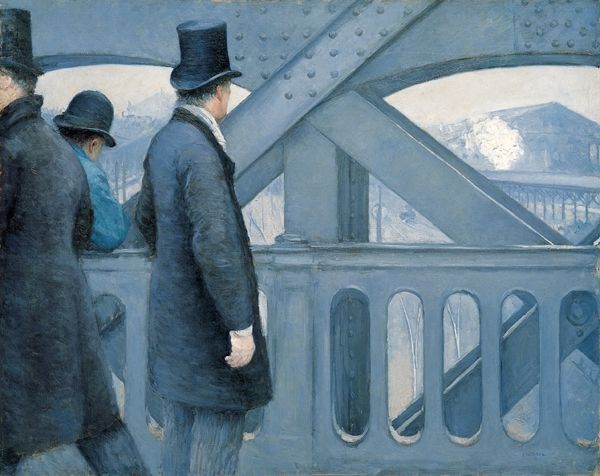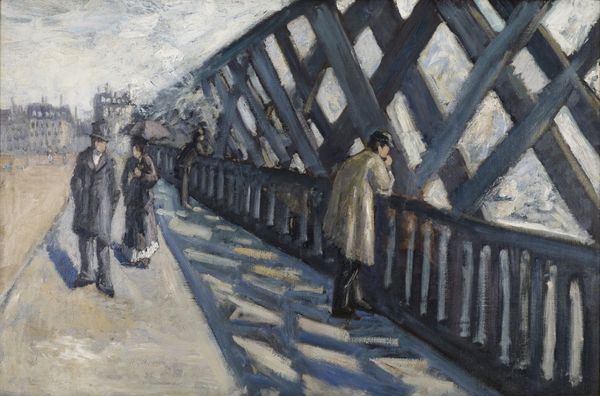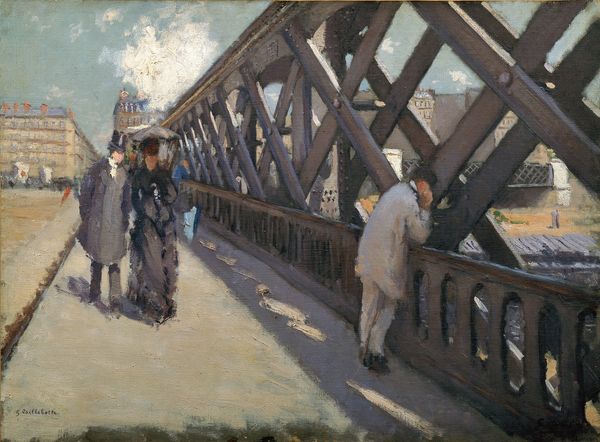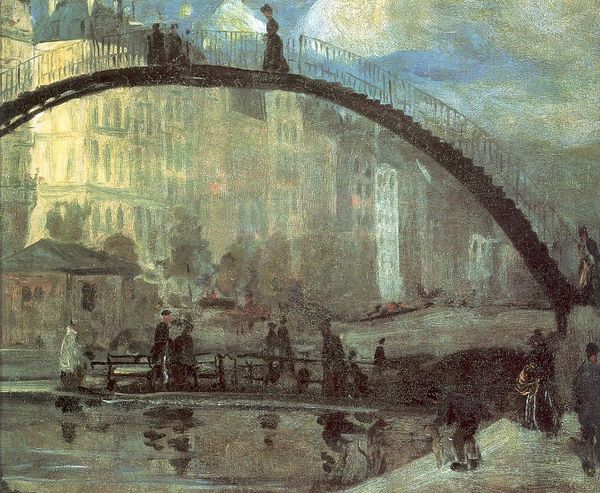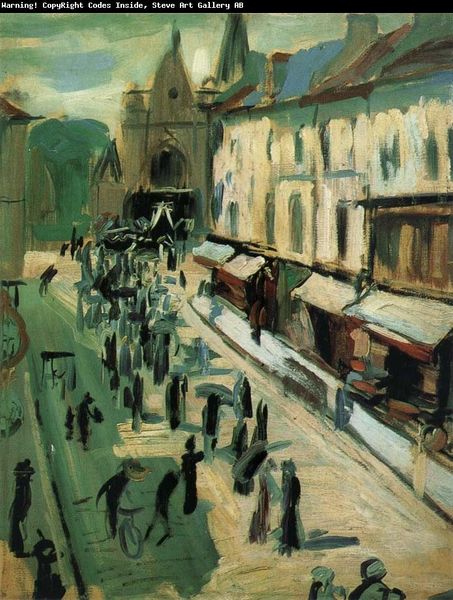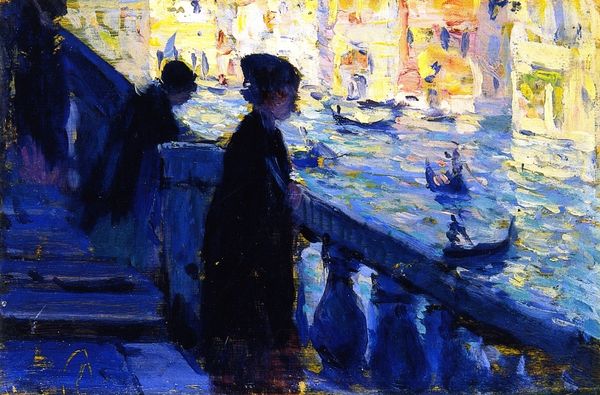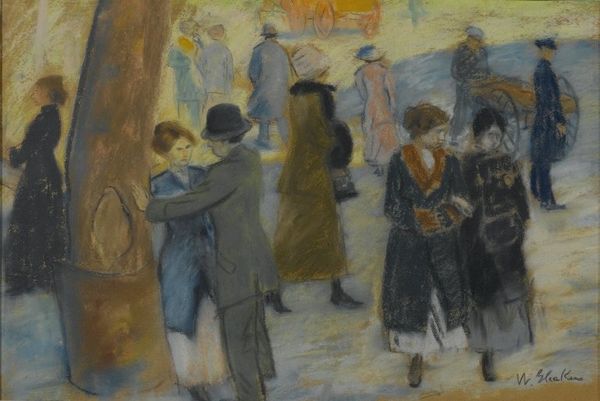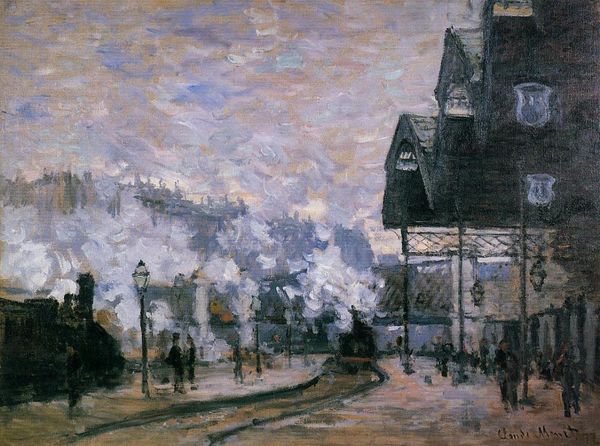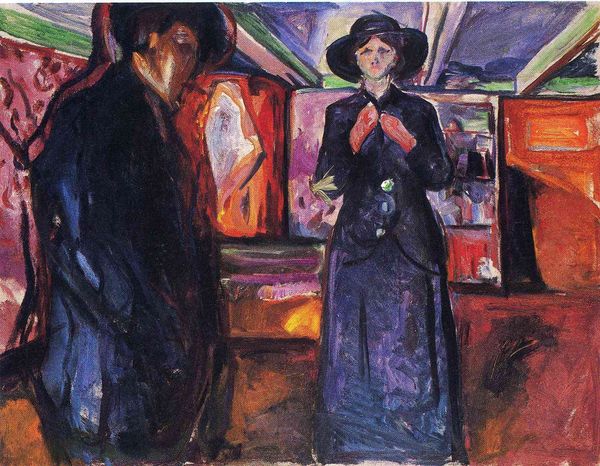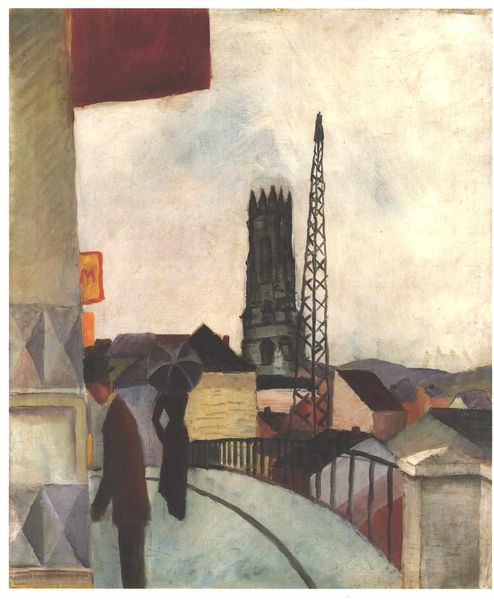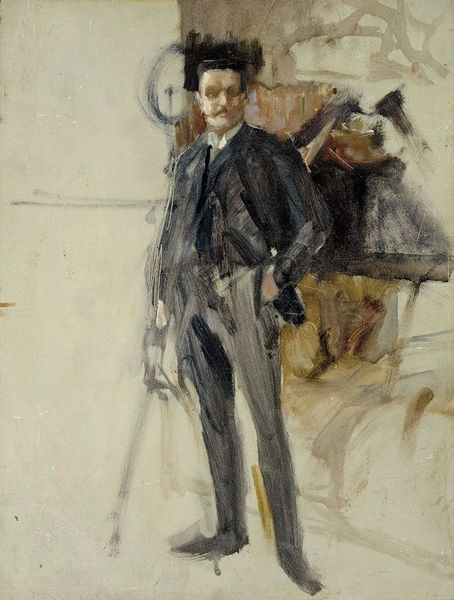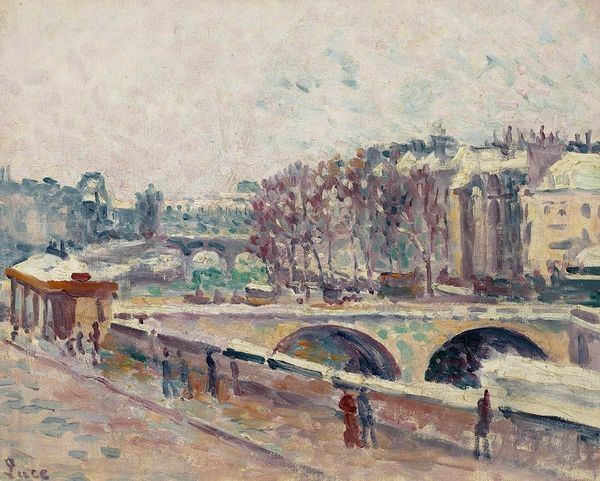
painting, oil-paint
#
portrait
#
flâneur
#
painting
#
impressionism
#
oil-paint
#
oil painting
#
portrait reference
#
male-portraits
#
cityscape
#
facial portrait
#
portrait art
#
fine art portrait
Copyright: Public domain
Editor: So here we have Gustave Caillebotte’s *The Pont de Europe (study)*, created in 1876 using oil paint. I’m struck by its almost photographic quality and the feeling of urban alienation it conveys. What can you tell me about it? Curator: Well, considering this work historically, Caillebotte’s choice to depict the Pont de l’Europe, a modern iron bridge, speaks volumes about the rapid industrialization and urbanization of Paris at the time. How do you think the composition reflects these social changes? Editor: It feels like the bridge itself is a cage, almost trapping the figures within the frame, which maybe speaks to a loss of freedom? Curator: Precisely! The flâneur, or urban observer, becomes a key figure in understanding this painting. These men, seemingly idle on the bridge, are observing the changing cityscape, but the steel girders also highlight their potential displacement. The gaze away from the viewer places emphasis on the observation of this changing world, and their ambiguous reactions within it. Editor: That makes sense. I initially just saw disconnected people on a bridge, but it's more a statement on that transitional period. Curator: Exactly, and even a political statement on who is being depicted within the piece; the upper classes. Who occupies public space, and who benefits most from urban development? These are key questions being explored. Editor: It really changes my perspective when thinking about it that way. I hadn’t really considered how social and political forces shape not just what artists create but why they create it. Curator: It's a complex interplay. We can use art as historical insight! Hopefully the history offers a more complete way of analyzing and appreciating what the artist did.
Comments
No comments
Be the first to comment and join the conversation on the ultimate creative platform.
